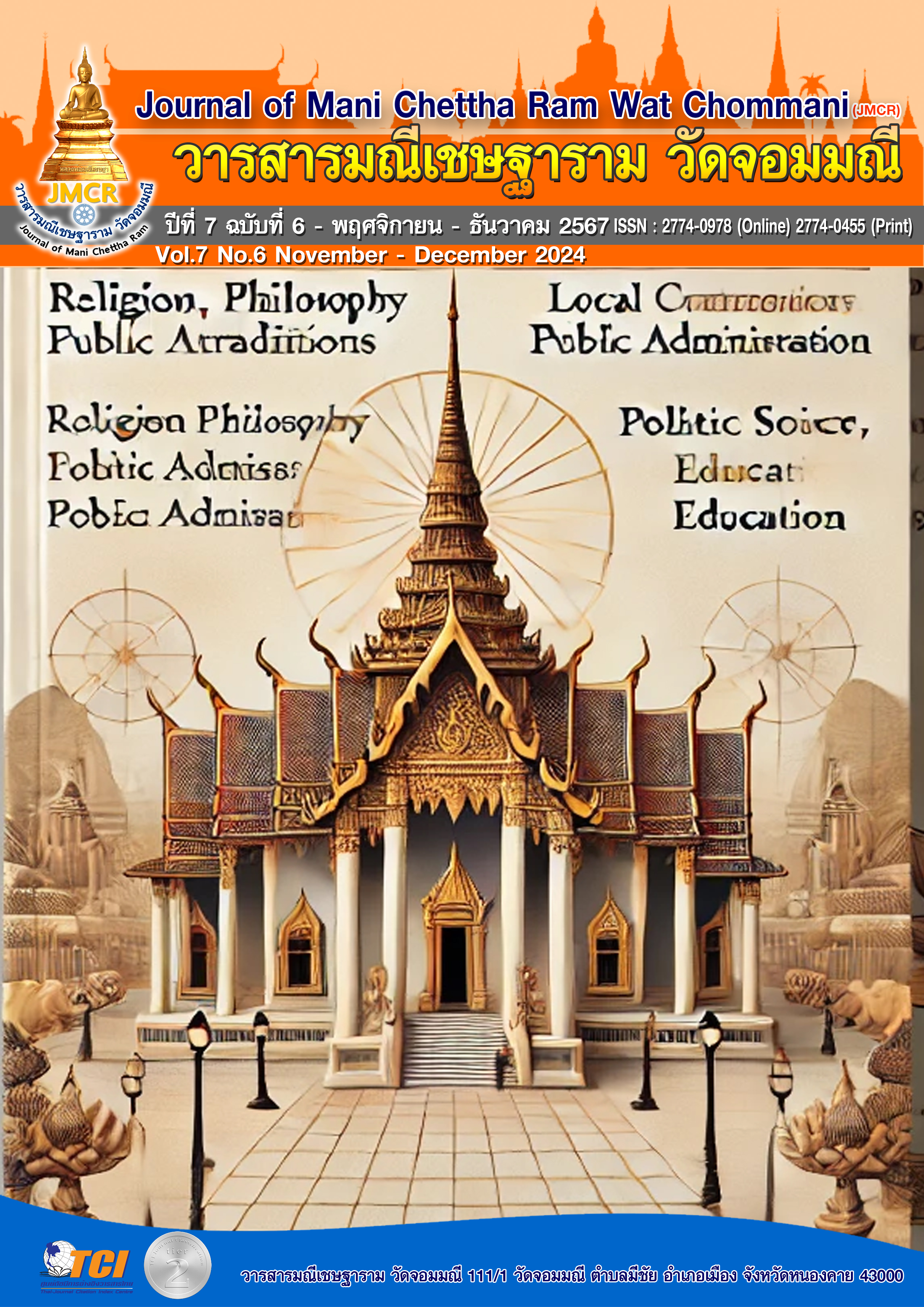INNOVATIVE BUDDHIST CARE
Keywords:
Buddhist care, InnovationAbstract
In this era of advanced technology and medical advancement, the challenges in patient care are no longer limited to physical illnesses. Taking care of the patient's mind and spirit is no less important, especially in a society where religious beliefs still play an important role. Integrating the teachings of Buddhism into healthcare and services, focusing on the development of innovations that care for health that are consistent with the teachings of the Lord Buddha, which cover physical and mental care, as well as promoting the well-being of patients, and caring for patients in the digital age has become an interesting approach under the concept of "innovative Buddhist care" in the context of patient care by monks. In Buddhism, it is called Phra Bariban or Phra Kilanupattthaka, which is the application of Buddhist principles combined with modern science and technology to care for mental and physical health of sick monks (patients), so that they recover from illness and return to good health, ready to practice Dhamma, and become a spiritual refuge for society and a leader in community and social well-being, by creating a connection between the temple and the community, making monks strong, temples stable, and communities strong in the future.
References
บุญช่วย สิรินฺธโร และคณะ. (2560). ธรรมนูญสุขภาพพระสงฆ์แห่งชาติ. (พิมพ์ครั้งที่ 1).กรุงเทพมหานคร: สำนักงานคณะกรรมการสุขภาพแห่งชาติ.
ปาริชาติ เปรมวิชัย. (2556). นโยบายสาธารณะเพื่อสุขภาพโดยใช้หลักพุทธธรรม. วารสารสหวิทยาการนวัตกรรมปริทรรศน์, 6 (3).
พระกิตติญาณเมธี (สมเกียรติ รามัญวงศ์) และคณะ. (2561). การส่งเสริมการดูแลสุขภาพแบบองค์รวมของพระสงฆ์ในจังหวัดลพบุรี. วารสารรัชต์ภาคย์.
พระครูพิพิธสุตาทร (บุญช่วย สิรินฺธโร) และคณะ, (2560). ความเชื่อเรื่องพระพุทธเจ้าในสังคมวัฒนธรรมล้านนา. วารสารวิชาการธรรมทรรศน์.
พระพรหมคุณาภรณ์ (ป.อ. ปยุตฺโต). (2551). โพชฌงค์ พุทธวิธีเสริมสุขภาพ. กรุงเทพมหานคร: หจก.ธนุชพริ้นติ้ง.
. (2550). ธรรมนูญชีวิต. (พิมพ์ครั้งที่ 4). กรุงเทพมหานคร: สำนักงานพระพุทธศาสนาแห่งชาติ.
ราชบัณฑิตยสถาน. (2556).พจนานุกรมฉบับราชบัณฑิตยสถาน พ.ศ.2554. (พิมพ์ครั้งที่2).กรุงเทพมหานคร: บริษัทอักษรเจริญทัศน์ อจท. จำกัด.
สำนักงานคณะกรรมการสุขภาพแหงชาติ (สช.). (2560). ธรรมนูญสุขภาพพระสงฆ์แห่งชาติ พุทธศักราช 2560. กรุงเทพมหานคร: บริษัท โอ.เอส. พริ้นติ้ง เฮาส จํากัด.
สำนักอนามัยผู้สูงอายุ กรมอนามัย กระทรวงสาธารณสุข. (2561). คู่มือแนวทางการอบรมหลักสูตรพระคิลานุปัฏฐาก (พระอาสาสมัครส่งเสริมสุขภาพประจำวัด - อสว.). กรุงเทพมหานคร: โรงพิมพ์องค์การสงเคราะห์ทหารผ่านศึก.
Kim, S. J., Park, H. S., & Cho, J. M. (2022). Processed food consumption and colorectal cancer risk: A population-based study. International Journal of Cancer Research, 58(1), 89-101. https://doi.org/10.1002/ijc.3321
Rossi, A., Del Vecchio, R., & Caruso, G. (2023). Dietary fat and sugar intake and cardiovascular disease risk in European populations: A systematic review and meta-analysis. European Journal of Nutrition, 62(4), 1503-1519. https://doi.org/10.1007/s00394-023-0591-0
Schmidt, T., Meyer, S., & Braun, M. (2022). Processed food consumption and colorectal cancer risk: Evidence from European cohort studies. International Journal of Cancer Prevention, 31(2), 213-225. https://doi.org/10.1002/ijcp.3310
Zhang, Y., Wang, X., & Liu, H. (2021). Dietary fat and sugar intake and the risk of cardiovascular disease: A meta-analysis. Journal of Clinical Nutrition, 44(2), 123-136. https://doi.org/10.1016/j.jcn.2021.1234


